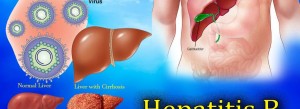Hepatitis B Virus: A Global Health Challenge
Hepatitis B virus (HBV) infection is one of the leading causes of liver disease and a major challenge to global public health. According to the WHO, about 257 million people worldwide are chronically infected with HBV, and approximately 887,000 people die every year from HBV-related diseases, including liver cirrhosis and hepatocellular carcinoma (HCC). HBV infection are not only affect the liver, but also affect multiple systems throughout the body, significantly impacting patients’ quality of life and life expectancy.
Epidemiology of HBV Infection
HBV infection is globally distributed, but there are significant geographical variations in prevalence. Asia, Africa, and the Western Pacific region are highly endemic for HBV infection, while North America, Western Europe, and Australia are low-endemic areas. HBV is primarily transmitted through blood, sexual contact, and mother-to-child transmission. In highly endemic areas, mother-to-child transmission is the main route of HBV infection; while in low-endemic areas, sexual contact and intravenous drug use are the primary routes of transmission
HBV infection are mainly reflected in the following aspects:
- Liver damage: HBV infection can lead to acute and chronic hepatitis, liver fibrosis, cirrhosis, and HCC. Chronic HBV infection is one of the leading causes of liver cirrhosis and HCC.
- Extrahepatic damage: HBV infection can also cause a variety of extrahepatic damage, including glomerulonephritis, vasculitis, peripheral neuropathy, etc.
- Social and economic burden: HBV infection places a significant economic burden on patients and their families, and also has a negative impact on social and economic development.Prevention and Control of HBV Infection
Prevention and Control of HBV Infection
Vaccination against hepatitis B is the most effective way to prevent HBV infection. WHO recommends that all newborns receive the first dose of hepatitis B vaccine within 24 hours of birth, and complete the full course of vaccination within 6 months. For high-risk groups who have not been vaccinated, such as healthcare workers, intravenous drug users, and people with multiple sexual partners, hepatitis B vaccination should also be administered.
In addition to vaccination, other measures to prevent HBV infection include:
- Promoting safe injection practices and avoiding unnecessary injections and blood transfusions.
- Strengthening the safety screening of blood and blood products.
- Promoting safe sex and correct use of condoms.
- Antiviral treatment for pregnant women with HBV infection to prevent mother-to-child transmission.
Conclusion
HBV infection is a serious global public health problem that poses a significant health and economic burden on individuals and society. Vaccination against hepatitis B is the most effective way to prevent HBV infection. Through comprehensive measures such as strengthening vaccination, promoting safe injection practices, strengthening blood safety screening, and promoting safe sex, the transmission of HBV can be effectively controlled, and the morbidity and mortality of HBV-related diseases can be reduced.
We Baysen Medical is always focus on diagnostic technique to improve the quality of life . We have developed 5 technology platforms- Latex , colloidal gold , Fluorescence Immunochromatographic Assay , Molecular,Chemiluminescence Immunoassay. Our Hbsag rapid test can quickly test for Hepatitis B Virus
Post time: Feb-26-2025
